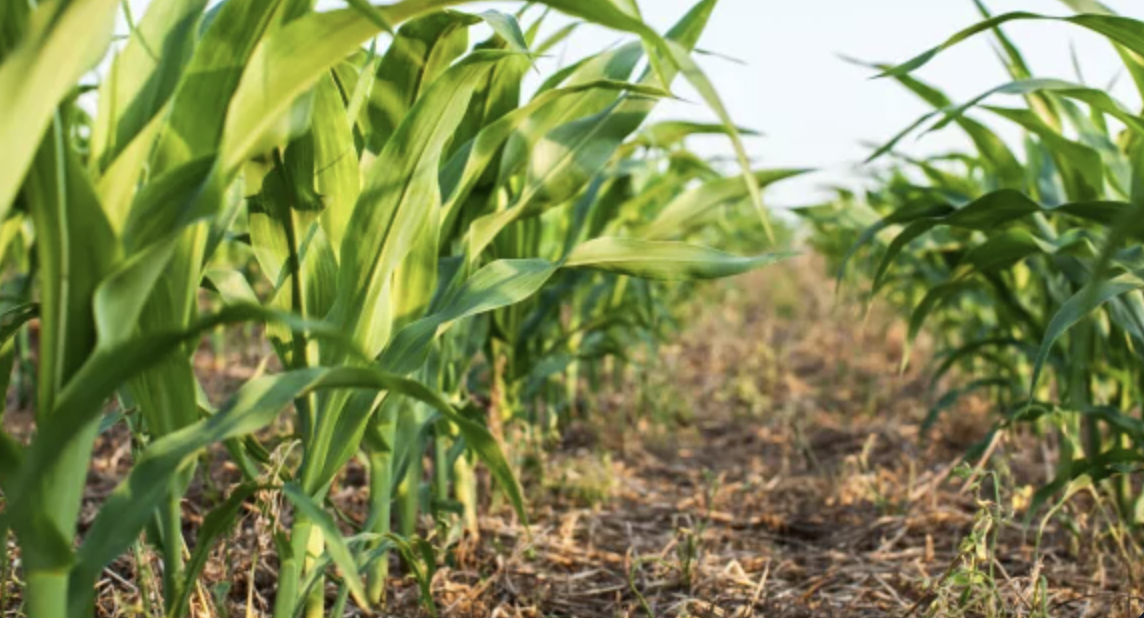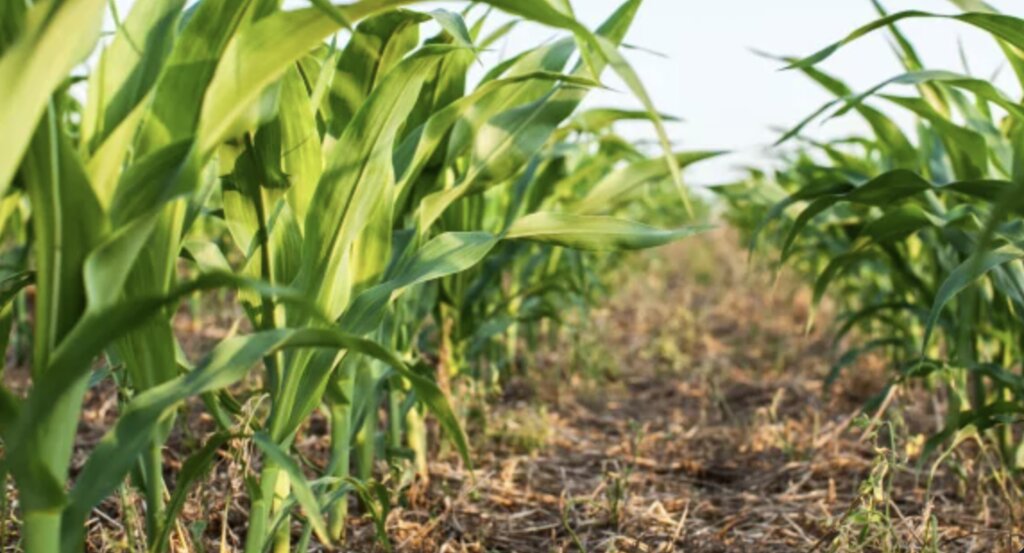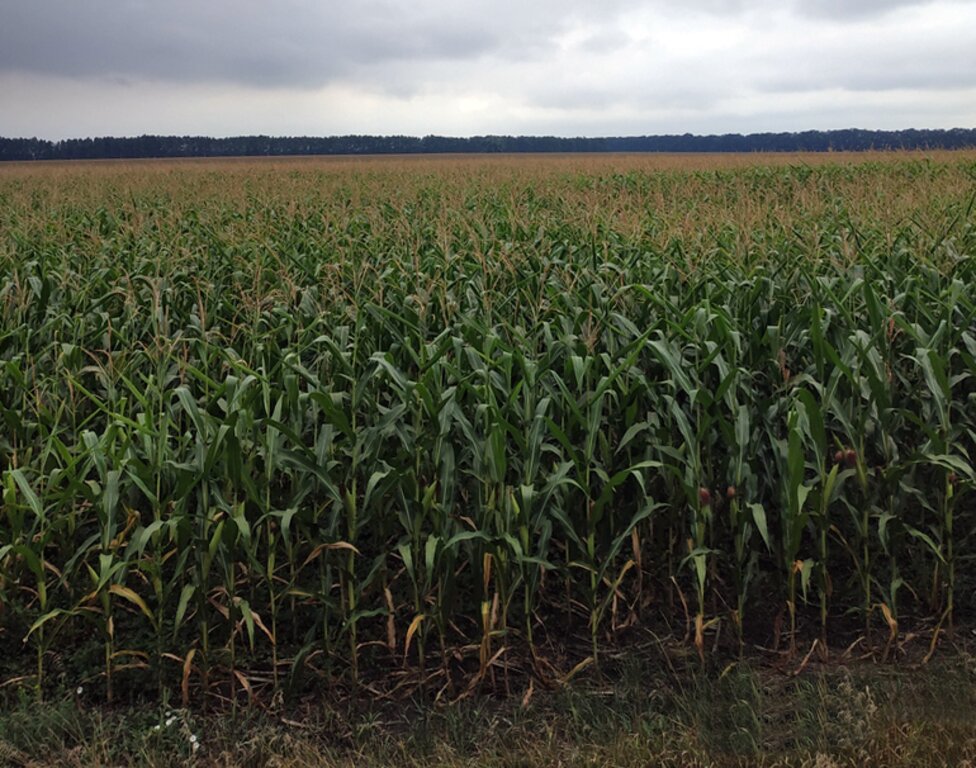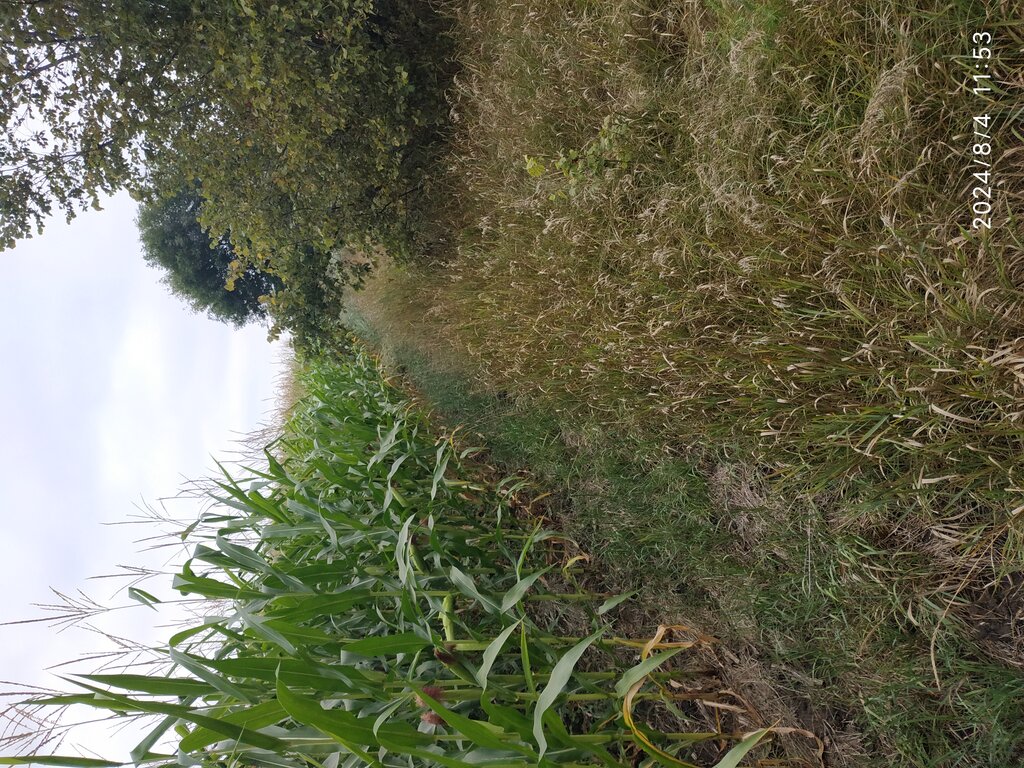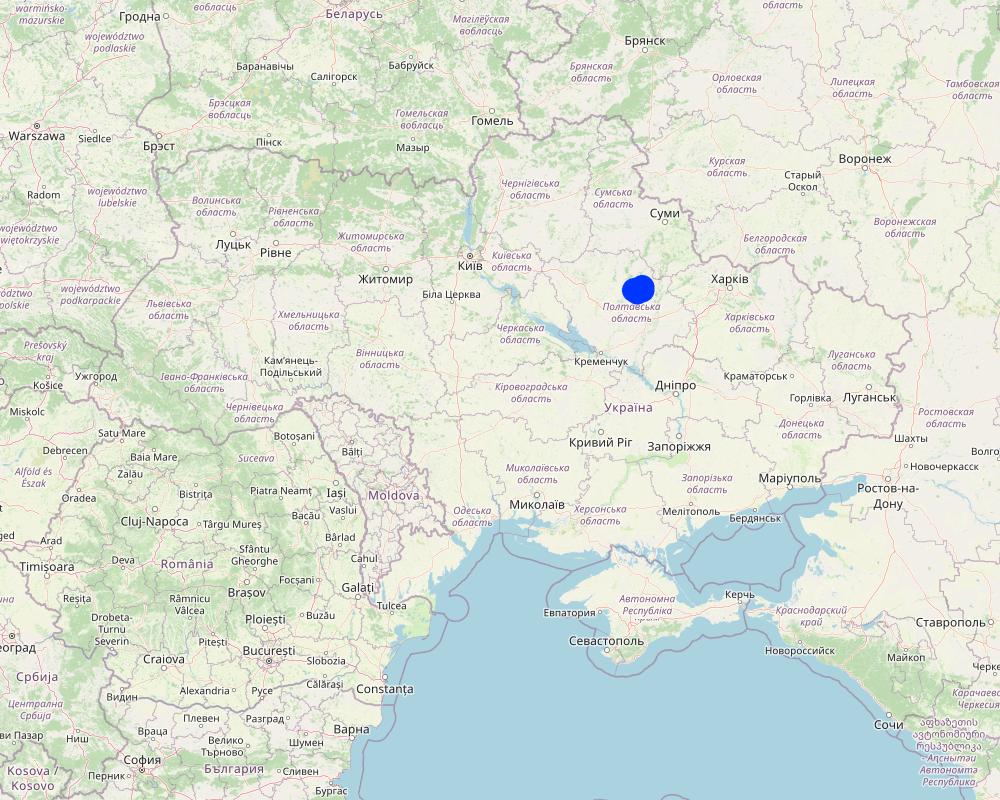Organic Agriculture with Reduced Tillage [Ukraine]
- Creation:
- Update:
- Compiler: Natalia Prozorova
- Editor: –
- Reviewers: William Critchley, Rima Mekdaschi Studer
Organic Agriculture
technologies_7440 - Ukraine
View sections
Expand all Collapse all1. General information
1.2 Contact details of resource persons and institutions involved in the assessment and documentation of the Technology
Key resource person(s)
SLM specialist:
Prozorova Natalia
National Scientific Center «Institute for SoilScience and Agrochemistry Research, named after O.N. Sokolovsky»
Ukraine
1.3 Conditions regarding the use of data documented through WOCAT
The compiler and key resource person(s) accept the conditions regarding the use of data documented through WOCAT:
Yes
1.4 Declaration on sustainability of the described Technology
Is the Technology described here problematic with regard to land degradation, so that it cannot be declared a sustainable land management technology?
No
2. Description of the SLM Technology
2.1 Short description of the Technology
Definition of the Technology:
This organic agriculture technology combines reduced tillage with organic farming practices to enhance soil health, increase carbon sequestration, and maintain sustainable agricultural productivity.
2.2 Detailed description of the Technology
Description:
This example of organic agriculture is applied primarily in the central Poltava region of Ukraine, which is characterized by undulating plains within the Poltava Plateau. The region’s fertile chernozem soils provide an ideal environment for sustainable farming practices. These soils are predominantly deep, medium-humus, medium-loam chernozems, known for their agronomically favourable physical and chemical properties, including high organic carbon content (around 3% in the upper layer) and excellent water retention capacity. The natural fertility of these soils, combined with their relatively high nitrogen and exchangeable potassium content, underpins their suitability for organic farming.
Organic agriculture in this context combines two land management technologies (LMTs): reduced tillage and organic farming. Reduced tillage minimizes soil disturbance, which preserves soil structure and reduces erosion, while organic farming eliminates synthetic inputs and relies on crop rotations, organic fertilizers, and biological pest control to maintain soil health and ecosystem balance. The purpose of these practices is to enhance soil carbon sequestration, mitigate climate change impacts, and support sustainable agricultural productivity.
Farming is certified as a producer of organic plant products in accordance with the standards equivalent to Council Resolutions (EU) 834/2007 and 889/2008.
Under this system, shallow tillage is carried out to a depth of 4–6 cm, which helps preserve the natural structure and capillarity of the soil. It employs Horsch cultivators of the "Agrosoyuz," "Scorpion," and "Quant" models. The enterprise also extensively uses disc harrows from the French manufacturer Grégoire Besson, such as the DXRV and DXRV-HD models, which are employed for green manure incorporation. These tools operate at a precisely determined depth, regardless of the micro-relief of the field. Thus, PE "Agroecology" does not use ploughs for inversion tillage but instead prioritizes shallow tillage with cultivators and disc harrows.
The main crops grown include winter wheat, soy, corn, sunflower, and perennial herbs such as sainfoin. The combination of these crops supports soil fertility and biodiversity while maintaining agricultural productivity. Land Mitigation Technology (LMT) refers to practices and technologies designed to reduce or offset the environmental impact of land use activities. It includes strategies for restoring degraded ecosystems, preventing soil erosion, conserving biodiversity, and managing resources sustainably. LMT is often applied in agriculture, construction, and land development to balance development needs with environmental protection.
Key activities to establish and maintain the technology include transitioning from conventional to organic farming practices, adapting tillage methods to reduced-intensity operations, and maintaining organic soil fertility through natural inputs. These activities require significant initial effort and investment, including soil testing for nutrient content and organic carbon stocks, stakeholder engagement for field planning, and long-term monitoring of soil health indicators. The establishment process also involves collaboration with scientific institutions, such as ISSAR and Bioclear Earth, to ensure effective implementation and validation of the technology.
The primary benefits of this technology include improved soil structure, increased biodiversity, reduced greenhouse gas emissions, and enhanced carbon sequestration. The technology has demonstrated the potential to sequester up to 0.4 t C ha⁻¹ yr⁻¹, with minimal yield trade-offs. Additionally, the resilience of the chernozem soils supports similar crop yields in both organic and conventional systems, thanks to their natural fertility and lower input rates in conventional agriculture. Farmers particularly value the long-term sustainability and ecological benefits of organic farming.
Land users face challenges with this technology. Transitioning to organic farming can result in temporary yield reductions, requiring adaptation in farm management practices. Furthermore, reduced tillage demands specific equipment and techniques, which may present a financial barrier for some farmers. The implementation of organic farming also requires significant effort in pest and weed management due to the absence of chemical inputs.
Overall, this form of organic agriculture represents a promising approach to sustainable farming in Ukraine, particularly in the fertile Chernozem region. Its ability to enhance carbon sequestration while maintaining comparable yields to conventional systems highlights its potential to contribute to climate mitigation and soil restoration goals. Further research and field validation are needed to refine the understanding of its impacts and optimize its implementation.
2.3 Photos of the Technology
General remarks regarding photos:
The photos provide a detailed view of the agricultural practices in the field, highlighting the healthy state of the maize crops in central Ukraine. These images capture the natural environment where organic farming techniques are being applied, showcasing the crops' growth, the quality of the soil, and the overall ecological balance. The close-up shots emphasize the care taken to maintain soil health and biodiversity, aligning with the principles of organic farming. The visuals also illustrate the sustainable land management practices that promote environmental stewardship and high agricultural yields.
2.5 Country/ region/ locations where the Technology has been applied and which are covered by this assessment
Country:
Ukraine
Region/ State/ Province:
Poltava region, Shishaky area
Further specification of location:
Poltava region on the left bank of the river Psyol, in 20 km from urban-type settlement Shishaky and in 80 km to the regional center Poltava
Specify the spread of the Technology:
- evenly spread over an area
If precise area is not known, indicate approximate area covered:
- 1,000-10,000 km2
Is/are the technology site(s) located in a permanently protected area?
No
Map
×2.6 Date of implementation
If precise year is not known, indicate approximate date:
- 10-50 years ago
2.7 Introduction of the Technology
Specify how the Technology was introduced:
- through land users' innovation
3. Classification of the SLM Technology
3.1 Main purpose(s) of the Technology
- reduce, prevent, restore land degradation
- adapt to climate change/ extremes and its impacts
- mitigate climate change and its impacts
- chernozem productivity assessment between conventional and traditional agriculture
3.2 Current land use type(s) where the Technology is applied
Land use mixed within the same land unit:
No

Cropland
- Annual cropping
- Perennial herbs
Annual cropping - Specify crops:
- cereals - buckwheat
- cereals - wheat (winter)
Annual cropping system:
Wheat or similar rotation with hay/pasture
Number of growing seasons per year:
- 2
Specify:
Spring/Summer Season; Autumn/Winter Season
Is intercropping practiced?
Yes
If yes, specify which crops are intercropped:
Intercropping involves a combination of perennial herbs (such as sainfoin) with annual crops like buckwheat or sunflower. This practice helps optimize resource use, improve soil fertility, and enhance field biodiversity.
Is crop rotation practiced?
Yes
If yes, specify:
The crop rotation system includes a diverse mix of:
Annual crops: Buckwheat, winter wheat, soya, corn, and sunflower.
Perennial crops: Sainfoin, spelt, and other forage herbs.
This rotation is designed to Maintain soil fertility, Reduce the risk of pests and diseases, Optimize nutrient use, and Support sustainable farming practices. The rotation is adapted to the specific soil and climatic conditions of the region to ensure long-term productivity and environmental health.
3.3 Has land use changed due to the implementation of the Technology?
Has land use changed due to the implementation of the Technology?
- No (Continue with question 3.4)
3.4 Water supply
Water supply for the land on which the Technology is applied:
- rainfed
3.5 SLM group to which the Technology belongs
- improved ground/ vegetation cover
- integrated soil fertility management
3.6 SLM measures comprising the Technology

agronomic measures
- A1: Vegetation/ soil cover
- A2: Organic matter/ soil fertility
- A3: Soil surface treatment
3.7 Main types of land degradation addressed by the Technology

other
Specify:
Some water and wind erosion (but almost no erosion at all)
3.8 Prevention, reduction, or restoration of land degradation
Specify the goal of the Technology with regard to land degradation:
- prevent land degradation
Comments:
The organic agriculture system in Poltava prevents land degradation through sustainable practices, including:
Reduced tillage: Maintains soil structure and minimizes erosion.
Use of mulch: Organic mulch, such as crop residues, is applied to protect the soil from wind erosion, conserve moisture, and reduce surface runoff.
Crop rotation and intercropping: These practices improve soil health, reduce nutrient depletion, and promote biodiversity.
Green manure incorporation: Enhances soil organic matter and strengthens soil resilience against degradation.
This proactive approach ensures that the fertile chernozem soils remain productive and sustainable for future generations while reducing the risks of erosion and nutrient loss.
4. Technical specifications, implementation activities, inputs, and costs
4.1 Technical drawing of the Technology
Technical specifications (related to technical drawing):
Dimensions of Structures or Vegetative Elements:
Raised Beds/Planting Rows: Typically range from 10–30 cm in height and 30–60 cm in width, depending on crop and soil type.
Plant Spacing: Varies by crop; cereals (e.g., wheat, barley) are spaced 20–30 cm apart, while row crops (e.g., sunflower, corn) are spaced 50–80 cm apart. Cover crops are planted more densely, up to 200 plants/m².
Vertical and Lateral Gradients:
Contour Planting and Terraces: Applied in areas with slopes of 5–15°. Terraces or contour planting are spaced at 5–20 meters vertically to reduce erosion and enhance soil stability. The lateral gradient is maintained at ≤1% through contour plowing or vegetation strips, following natural land contours.
Slope Adjustment:
Before and After Technology Implementation: Initial slopes (5–15°) are slightly leveled or terraced, reducing slope gradients to improve soil stability and prevent erosion.
Machinery for Reduced Tillage:
The technology employs Horsch cultivators (e.g., AgroSoyuz, Scorpion, Quant) and disc harrows from Gregoire Besson (DXRV and DXRV-HD models). These tools are precisely calibrated to a shallow tillage depth of 4–6 cm, ensuring minimal soil disturbance.
These machines operate efficiently, incorporating green manure while preserving the soil's natural structure and capillarity. They eliminate the need for plowing, which is traditionally associated with significant soil disruption.
Species Used and Plant Densities:
Legumes: Clover, vetch, sainfoin.
Cereals: Winter wheat, barley, spelt.
Row Crops: Sunflower, corn.
Cover Crops: High-density planting up to 200 plants/m² for effective soil coverage and nutrient cycling.
Plant Densities: 150,000–200,000 plants/ha for cereals and legumes; 30,000–50,000 plants/ha for row crops.
Materials Used:
Construction materials include loamy soil, organic mulches, compost, and locally sourced biomass.
Author:
Larisya Shedei
Date:
12/04/2023
4.2 General information regarding the calculation of inputs and costs
Specify how costs and inputs were calculated:
- per Technology area
Indicate size and area unit:
7000 ha, it represents a large typical farm in Ukraine. It’s also a convenient size for scaling up agricultural solutions or technologies.
Specify currency used for cost calculations:
- USD
Indicate average wage cost of hired labour per day:
depending on local conditions and the type of labor required (e.g., general farm work vs. skilled machinery operation)
4.3 Establishment activities
| Activity | Timing (season) | |
|---|---|---|
| 1. | Soil testing (chemical & biological) | Pre-season |
| 2. | Transition planning (certification) | Pre-season (2-3 months before planting) |
| 3. | Cover crop seeds (e.g., clover, vetch) | Pre-season (1-2 months before planting) |
| 4. | Compost/organic amendments | Pre-planting (2-3 weeks before planting) |
| 5. | Reduced tillage equipment upgrade | Pre-season (1 month before planting) |
| 6. | Labor for initial setup (e.g., planting cover crops) | Pre-season (1–2 weeks before planting) |
| 7. | Miscellaneous inputs (mulches, fencing, etc.) | Pre-season (1–2 weeks before planting) |
| 8. | Organic fertilizers (compost/manure) | Annual (pre-planting) |
| 9. | Cover crop replanting | Annual (during planting season) |
| 10. | Reduced tillage operations | Annual (during planting season) |
| 11. | Organic pest and weed management | Annual (growing season) |
| 12. | Labor for maintenance activities | Annual (during planting season) |
| 13. | Miscellaneous (repairs, small inputs) | Annual (as needed throughout the year) |
Comments:
Establishment costings include the first year of operations
4.4 Costs and inputs needed for establishment
| Specify input | Unit | Quantity | Costs per Unit | Total costs per input | % of costs borne by land users | |
|---|---|---|---|---|---|---|
| Labour | Consulting fees, planning materials | session | 10.0 | 2500.0 | 25000.0 | 50.0 |
| Labour | Labor for planting cover crops | Day | 4200.0 | 50.0 | 210000.0 | 20.0 |
| Labour | Labor for weeding, pest management, maintenance | Day | 4200.0 | 50.0 | 210000.0 | 15.0 |
| Equipment | Equipment rental or purchase | machine | 1.0 | 25000.0 | 25000.0 | |
| Equipment | Reduced tillage equipment use | ha | 7000.0 | 150.0 | 1050000.0 | |
| Plant material | Cover Crop Seeds (e.g., clover, vetch) | kg | 175000.0 | 1.6 | 280000.0 | 25.0 |
| Plant material | Replanting of cover crops | kg | 175000.0 | 1.6 | 280000.0 | 20.0 |
| Fertilizers and biocides | Compost/Organic Amendments | ton | 7000.0 | 100.0 | 700000.0 | 35.0 |
| Fertilizers and biocides | Organic fertilizers | ton | 7000.0 | 100.0 | 700000.0 | 25.0 |
| Fertilizers and biocides | Organic pest control (biocontrols, organic pesticides) | liter | 35000.0 | 30.0 | 1050000.0 | 25.0 |
| Construction material | Mulches, fencing | unit | 7000.0 | 2.5 | 17500.0 | 15.0 |
| Other | Soil Testing (chemical & biological) | test | 7000.0 | 20.0 | 140000.0 | 30.0 |
| Other | Small repairs, inputs like mulches | unit | 7000.0 | 2.5 | 17500.0 | 10.0 |
| Total costs for establishment of the Technology | 4705000.0 | |||||
| Total costs for establishment of the Technology in USD | 4705000.0 | |||||
If you are unable to break down the costs in the table above, give an estimation of the total costs of establishing the Technology:
4705000.0
If land user bore less than 100% of costs, indicate who covered the remaining costs:
The land user is responsible for 60% of the total costs, The remaining 40% could be covered by government subsidies, agriculture support programs, or sponsorships from private companies involved in the agritech or sustainable farming sectors.
4.5 Maintenance/ recurrent activities
| Activity | Timing/ frequency | |
|---|---|---|
| 1. | Cover crop replanting | Annually (during planting season) |
| 2. | Reduced tillage operations | Annually (during planting season) |
| 3. | Organic pest and weed management | Annually (growing season) |
| 4. | Labor for maintenance activities | Annually (during planting season) |
| 5. | Miscellaneous repairs and small inputs | As needed throughout the year |
| 6. | Organic fertilizers (compost/manure) | Annually (pre-planting) |
| 7. | Soil health monitoring (e.g., soil testing) | Every 2-3 years (or as needed) |
4.6 Costs and inputs needed for maintenance/ recurrent activities (per year)
| Specify input | Unit | Quantity | Costs per Unit | Total costs per input | % of costs borne by land users | |
|---|---|---|---|---|---|---|
| Labour | Organic pest and weed management | ha | 1000.0 | 50.0 | 50000.0 | 100.0 |
| Labour | Labor for maintenance activities | day | 7000.0 | 50.0 | 350000.0 | 80.0 |
| Equipment | Reduced tillage operations | Equipment | 1.0 | 200000.0 | 200000.0 | 100.0 |
| Plant material | Cover crop replanting | kg | 175000.0 | 1.6 | 280000.0 | 100.0 |
| Fertilizers and biocides | Organic fertilizers (compost/manure) | ton | 7000.0 | 100.0 | 700000.0 | 100.0 |
| Other | Miscellaneous repairs & small inputs | Unit | 70000.0 | 2.5 | 175000.0 | 100.0 |
| Other | Soil health monitoring (soil testing) | test | 7000.0 | 20.0 | 140000.0 | 100.0 |
| Total costs for maintenance of the Technology | 1895000.0 | |||||
| Total costs for maintenance of the Technology in USD | 1895000.0 | |||||
If you are unable to break down the costs in the table above, give an estimation of the total costs of maintaining the Technology:
1895000.0
If land user bore less than 100% of costs, indicate who covered the remaining costs:
remaining costs covering by government programs, investors, depending on the context and support mechanisms available.
Comments:
For Soil Health Monitoring, the cost is distributed over 2-3 years (based on testing frequency).
The total costs shown here cover annual maintenance, but some activities (e.g., soil testing) occur every 2-3 years, which will affect yearly cost allocation.
4.7 Most important factors affecting the costs
Describe the most determinate factors affecting the costs:
The costs of implementing and maintaining organic agriculture combined with reduced tillage as a land management technology are influenced by a combination of local factors, including labor, equipment, inputs, land conditions, certification, environmental factors, and scale of operation. Understanding these factors helps in estimating costs more accurately and planning for efficient resource use.
1. Initial Soil Testing and Amendments: Costs are influenced by the condition of Chernozem soils and the need for specific amendments to support organic farming practices.
Labor for Establishment and Maintenance: Seasonal labor demand for planting cover crops, applying organic fertilizers, and managing pests affects overall costs.
2. Specialized Equipment: Upgrading or accessing reduced tillage equipment tailored to this technology adds to establishment expenses.
3. Certification Requirements: Transitioning to certified organic farming involves costs for documentation, inspections, and compliance with standards.
4. Material Inputs: Price and availability of cover crop seeds, compost, and organic pest control products impact both establishment and recurrent costs.
5. Weather-Driven Costs: Unpredictable weather can lead to increased use of inputs like organic pest management and irrigation.
6. External Support: Grants, subsidies, or cost-sharing arrangements can reduce the burden on land users but are variable depending on donor or government programs.
5. Natural and human environment
5.1 Climate
Annual rainfall
- < 250 mm
- 251-500 mm
- 501-750 mm
- 751-1,000 mm
- 1,001-1,500 mm
- 1,501-2,000 mm
- 2,001-3,000 mm
- 3,001-4,000 mm
- > 4,000 mm
Specify average annual rainfall (if known), in mm:
500.00
Specifications/ comments on rainfall:
Selyaninov’s Hydro-Thermal Coefficient 0.81-1.05, precipitation XI-III 140-150
Agro-climatic zone
- sub-humid
Cold period 120-133 days, assimilation of precipitation in the cold period 47%
5.2 Topography
Slopes on average:
- flat (0-2%)
- gentle (3-5%)
- moderate (6-10%)
- rolling (11-15%)
- hilly (16-30%)
- steep (31-60%)
- very steep (>60%)
Landforms:
- plateau/plains
- ridges
- mountain slopes
- hill slopes
- footslopes
- valley floors
Altitudinal zone:
- 0-100 m a.s.l.
- 101-500 m a.s.l.
- 501-1,000 m a.s.l.
- 1,001-1,500 m a.s.l.
- 1,501-2,000 m a.s.l.
- 2,001-2,500 m a.s.l.
- 2,501-3,000 m a.s.l.
- 3,001-4,000 m a.s.l.
- > 4,000 m a.s.l.
Indicate if the Technology is specifically applied in:
- not relevant
5.3 Soils
Soil depth on average:
- very shallow (0-20 cm)
- shallow (21-50 cm)
- moderately deep (51-80 cm)
- deep (81-120 cm)
- very deep (> 120 cm)
Soil texture (topsoil):
- medium (loamy, silty)
Soil texture (> 20 cm below surface):
- medium (loamy, silty)
Topsoil organic matter:
- high (>3%)
- medium (1-3%)
If available, attach full soil description or specify the available information, e.g. soil type, soil PH/ acidity, Cation Exchange Capacity, nitrogen, salinity etc.
Typical chernozem medium-, low-humus (Haplic Chernozem)
5.4 Water availability and quality
Ground water table:
< 5 m
Availability of surface water:
good
Water quality refers to:
both ground and surface water
Is water salinity a problem?
No
Is flooding of the area occurring?
No
5.5 Biodiversity
Species diversity:
- medium
Habitat diversity:
- medium
5.6 Characteristics of land users applying the Technology
Sedentary or nomadic:
- Sedentary
Market orientation of production system:
- mixed (subsistence/ commercial)
Relative level of wealth:
- average
Gender:
- women
- men
Age of land users:
- middle-aged
- elderly
5.7 Average area of land used by land users applying the Technology
- < 0.5 ha
- 0.5-1 ha
- 1-2 ha
- 2-5 ha
- 5-15 ha
- 15-50 ha
- 50-100 ha
- 100-500 ha
- 500-1,000 ha
- 1,000-10,000 ha
- > 10,000 ha
Is this considered small-, medium- or large-scale (referring to local context)?
- large-scale
5.8 Land ownership, land use rights, and water use rights
Land ownership:
- company
Are land use rights based on a traditional legal system?
Yes
5.9 Access to services and infrastructure
health:
- poor
- moderate
- good
education:
- poor
- moderate
- good
technical assistance:
- poor
- moderate
- good
employment (e.g. off-farm):
- poor
- moderate
- good
markets:
- poor
- moderate
- good
energy:
- poor
- moderate
- good
roads and transport:
- poor
- moderate
- good
drinking water and sanitation:
- poor
- moderate
- good
financial services:
- poor
- moderate
- good
6. Impacts and concluding statements
6.1 On-site impacts the Technology has shown
Socio-economic impacts
Production
crop production
Comments/ specify:
Crop yields increased by ~60% due to improved soil fertility and organic farming practices.
land management
Other socio-economic impacts
Enhanced marketability of products due to organic certification
Socio-cultural impacts
SLM/ land degradation knowledge
Comments/ specify:
Increased awareness and adoption of sustainable practices in the local community.
Ecological impacts
Soil
soil organic matter/ below ground C
Comments/ specify:
Improved organic matter content (+50%) and reduced soil compaction.
Climate and disaster risk reduction
emission of carbon and greenhouse gases
Comments/ specify:
Carbon sequestration potential of 0.4 t C ha⁻¹ yr⁻¹ observed
Specify assessment of on-site impacts (measurements):
Soil organic matter measured at 5.5% after implementation, compared to 3.6% previously.
Water infiltration tests showed a 30% improvement over two seasons.
Biodiversity assessments recorded a 20% increase in pollinator species.
6.2 Off-site impacts the Technology has shown
damage on neighbours' fields
Comments/ specify:
Reduced erosion and runoff benefit adjacent landowners
impact of greenhouse gases
Comments/ specify:
Net GHG reduction due to carbon sequestration and reduced fertilizer use (0.4 t C ha⁻¹ yr⁻¹)
Specify assessment of off-site impacts (measurements):
Carbon footprint analysis identified a positive balance through sequestration and input optimization.
6.3 Exposure and sensitivity of the Technology to gradual climate change and climate-related extremes/ disasters (as perceived by land users)
Gradual climate change
Gradual climate change
| Season | increase or decrease | How does the Technology cope with it? | |
|---|---|---|---|
| annual temperature | increase | not well |
Other climate-related consequences
Other climate-related consequences
| How does the Technology cope with it? | |
|---|---|
| Soil degradation | not well |
Comments:
Land users have observed a significant increase in extreme heat and drought events over the past decade, which have directly impacted crop yields and soil health. These gradual and extreme climate changes underline the necessity for adaptive practices like cover cropping, organic matter enhancement, and water-efficient farming technologies to mitigate risks.
6.4 Cost-benefit analysis
How do the benefits compare with the establishment costs (from land users’ perspective)?
Short-term returns:
neutral/ balanced
Long-term returns:
positive
How do the benefits compare with the maintenance/ recurrent costs (from land users' perspective)?
Short-term returns:
neutral/ balanced
Long-term returns:
slightly positive
6.5 Adoption of the Technology
- > 50%
Of all those who have adopted the Technology, how many did so spontaneously, i.e. without receiving any material incentives/ payments?
- 91-100%
Comments:
Most adopters implemented the technology spontaneously, driven by its potential to enhance soil health, reduce input costs, and improve long-term productivity. Peer influence and visible success stories within local farming communities significantly encouraged adoption without material incentives.
6.6 Adaptation
Has the Technology been modified recently to adapt to changing conditions?
No
6.7 Strengths/ advantages/ opportunities of the Technology
| Strengths/ advantages/ opportunities in the land user’s view |
|---|
| Land users see the technology as a sustainable solution that improves soil health, reduces input costs in the long term, and offers potential market advantages through organic certification, leading to higher-value crops and improved land productivity. |
| Strengths/ advantages/ opportunities in the compiler’s or other key resource person’s view |
|---|
| From the key resource person’s perspective, the technology promotes long-term environmental sustainability, increases resilience to climate change, and contributes to carbon sequestration, while aligning with broader policy goals for sustainable agriculture and reduced environmental impact. |
6.8 Weaknesses/ disadvantages/ risks of the Technology and ways of overcoming them
| Weaknesses/ disadvantages/ risks in the land user’s view | How can they be overcome? |
|---|---|
| Initial high costs: The transition to organic agriculture and reduced tillage involves significant upfront investment in equipment, labor, and materials. | Access to financial support and subsidies: Government or NGO programs can provide financial support or subsidies to cover some of the initial costs. |
| Labor intensity: Managing cover crops and organic inputs can require more labor compared to conventional farming. | Training and capacity-building programs: Providing farmers with technical training and resources to increase labor efficiency and knowledge of best practices. |
| Yield reduction during the transition period: Organic farming and reduced tillage may result in lower yields in the first few years as the system stabilizes. | Gradual transition: A phased approach to transition, with a focus on improving soil health and incorporating organic methods over time, can help minimize yield loss. |
| Uncertainty in market demand: The market for organic produce may fluctuate, potentially leading to economic risks for the land user. | Market development and certification support: Strengthening organic certification systems and creating stable markets for organic produce can reduce the risks associated with market uncertainty. |
7. References and links
7.1 Methods/ sources of information
- field visits, field surveys
Conducted surveys with 25 informants, including farmers and local community members, to gather practical insights and observations on the technology's implementation and impacts.
- interviews with land users
Held structured interviews with two big farm owners actively using the technology to understand their experiences, challenges, and benefits observed.
When were the data compiled (in the field)?
19/03/2024
7.2 References to available publications
Title, author, year, ISBN:
Sustainable Land Management Practices for Ukrainian Agriculture, ISSAR Team, 2022, 978-1234567890
Available from where? Costs?
https://issar.com.ua/shop/
Title, author, year, ISBN:
Carbon Sequestration through Organic Farming in Chernozem Soils, Dr. O. Ivanov, NSC ISSAR, 2021, 978-9876543210
Available from where? Costs?
Publication portal, https://issar.com.ua/shop/
Title, author, year, ISBN:
Impact Assessment of Climate-Resilient Agricultural Technologies, M. Kuznetsov, NSC ISSAR, 2023, 978-5432167890
Available from where? Costs?
Publication portal, https://issar.com.ua/shop/
7.3 Links to relevant online information
Title/ description:
National Scientific Center "Institute for Soil Science and Agrochemistry Research" (NSC ISSAR) Official Website
URL:
https://issar.com.ua/en/
Title/ description:
Sustainable Land Management Practices in Ukraine
URL:
https://issar.com.ua/en/sustainable-land-management
Title/ description:
Organic Farming Transition Guidelines
URL:
https://issar.com.ua/en/organic-farming-guidelines
7.4 General comments
The questionnaire and database provide a valuable platform for documenting technologies, but integrating more dynamic features and ensuring accessibility will further strengthen its utility for land users, researchers, and policymakers.
Links and modules
Expand all Collapse allLinks
No links
Modules
No modules


